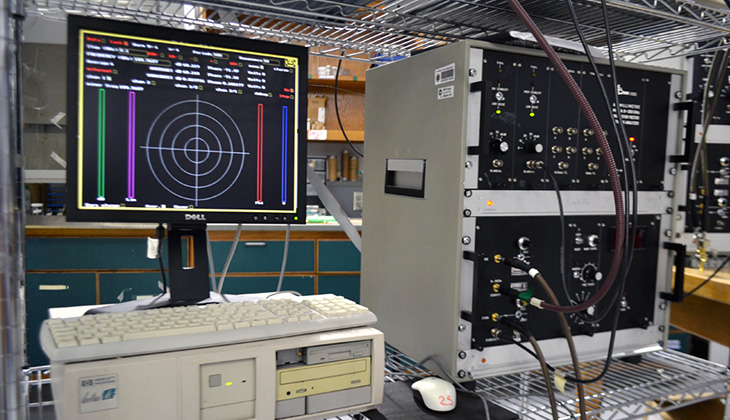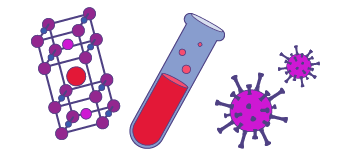
Several broadband (continuous from 8 GHz to 1 THz) instruments based on MVNA spectrometers have been configured for high-sensitivity oriented single-crystal measurements, enabling EPR studies simultaneously as a function of field orientation, pressure and temperature.
The MVNA spectrometers are optimized for oriented single-crystal continuous-wave EPR (and cyclotron resonance) measurements spanning the frequency range from 8 GHz to 1 THz, from room temperature down to as low as 500 mK (1.4 K is routine). Resonant cavities are used at lower frequencies (< 400 GHz), while a simple transmission configuration is used at the higher frequencies. Spectrometers and probes can either be associated with a 15 T vertical superconducting magnet, a 7 T split horizontal split-pair magnet, or a 9/5/1 T vector magnet, where the latter two systems enable in-situ two-axis crystal rotations.
In addition, all spectrometers are compatible with the DC resistive magnets at the MagLab with a highest field of 45 T, including single-axis crystal rotation capabilities. The possibility of performing two-axis oriented single-crystal EPR studies under hydrostatic pressures of up to 3 GPa also exists. The sizes of samples needed for ambient-pressure single-crystal EPR studies varies from about a millimeter to just a few hundred microns in terms of the average linear dimension; the minimum sample volume of course depends on several factors such as the spin density, the sharpness of the EPR spectrum, and the frequency range where data are desired.
As a general rule, higher frequency measurements require larger crystals, while high-pressure studies are limited to sub-millimeter sized crystals. X-ray structures should be available before single-crystal measurements are performed. If at all possible, users are encouraged to send crystals that have been faced indexed, though this is not required. Preliminary magnetic measurements are also very useful, e.g., DC susceptibility measurements are strongly recommended in order to facilitate planning and interpretation of single-crystal EPR measurements. For compounds that co-crystallize with structural solvent molecules, it is suggested that the crystals should be shipped in the solvent in order to avoid evaporation and degradation in sample quality. For compounds containing particularly volatile solvents, as well as materials that may be air-sensitive, protocols have been developed for rapid sample loading (within <1 minute). Finally, potential users are encouraged to discuss plans with members of the EMR group prior to submission of a proposal.

Explore our magnet schedule to see what exciting research is happening on our stellar fleet of instruments right now.
Prescimone A., et al, Pressure-driven orbital reorientations and coordination sphere reconstructions in [CuF2(H2O)2(pyz)], Angew. Chem. 51, 7490–7494 (2012) Read online.
Hill S. and Takahashi, S., Microwave spectroscopy of Q1D and Q2D organic conductors, in The Physics of Organic Superconductors and Conductors, Berlin Heidelberg. Ed. Andrei Lebed (2008) Read online.
Takahashi S., et al, A rotating cavity for high-field angle-dependent microwave spectroscopy of low-dimensional conductors and magnets, Rev. Sci. Instrum. 76, 023114 (2005) Read online.
Mola M., et al, Instrumentation for millimeter-wave magnetoelectrodynamic investigations of low-dimensional conductors and superconductors, Rev. Sci. Instrum. 71, 186; (2000) Read online.
For more information, please contact:
Last modified on 08 December 2023